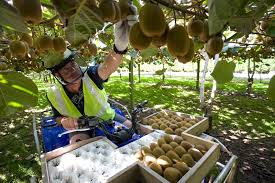
The demographic of medium-skill occupations breaks down into technicians and trade workers, community and personal service workers, and clerical and administrative workers.
The medium-skill occupations are characterised by a relative indifference to the two major parties. This makes sense if National and Labour are considered to represent opposite poles of the capital-labour spectrum, because the medium-skill occupations, falling in the middle, could be expected to be indifferent.
Working as a technician or trades worker had a correlation of -0.09 with voting National in 2014, and a correlation of -0.02 with voting Labour in 2014. This is not too surprising as neither of those parties aim to represent people in this occupation.
Technicians and trade workers had a significant positive correlation with voting New Zealand First in 2014 – this was 0.44. This can only partially be explained by the fact that this occupation has a significant positive correlation with being Maori, and Maoris love New Zealand First.
For all the other parties, besides ACT, they were indifferent. The correlation between working as a technician or trades worker and voting ACT in 2014 was -0.37.
The reason for these correlations might be that people who work as technicians and trade workers have a strong working-class sentiment but cannot find expression for it in the Labour Party, which more and more has come to represent middle class special interests.
The voting patterns of community and personal service workers reflected the fact that there was a correlation of 0.72 between working in this occupation and being Maori. In particular, there were strong correlations with all of the Maori-heavy parties.
The correlation between working as a community or personal service worker and voting New Zealand First in 2014 was 0.48; with Internet MANA it was 0.56; with voting Maori Party it was 0.64 and with voting Aotearoa Legalise Cannabis Party it was 0.76.
Consequently, the correlations between working in these profesions and voting for the parties that Maoris don’t like were all significantly negative. With voting Conservative in 2014 it was -0.41; with voting ACT it was -0.47 and with voting National it was -0.51.
These correlations also reflect the degree of compassion evidenced in the policies of the various parties. Because the sort of person who works as a community or personal service worker can be expected to have a higher than usual amount of compassion, it’s clear that their voting patterns reflect this.
The last group of medium-skill occupations is clerical and administrative workers. This class is perhaps better considered as somewhere on the high-skill end of the medium-skill occupations.
Their voting patterns are consequently much like that of the professional class (with whom they share a high income). The strongest positive correlation between working as a clerical and administrative worker and voting for a political party in 2014 was 0.22, with the Greens. The strongest negative one was -0.24, with the Conservative Party.
It’s not possible from that, however, to conclude that people in this group are particularly left-wing. The correlations with voting for Internet MANA in 2014 (0.14) and for the Maori Party in 2014 (0.12) were about as strong as the correlation with voting for ACT in 2014 (0.17). Likewise, the correlations with the three most established parties were all negative, if insignificant.
These patterns reflect the fact that most people working in this group are young adults with ambition, just not quite enough ambition to get a professional degree.
*
This article is an excerpt from Understanding New Zealand, by Dan McGlashan, published by VJM Publishing in the winter of 2017.



